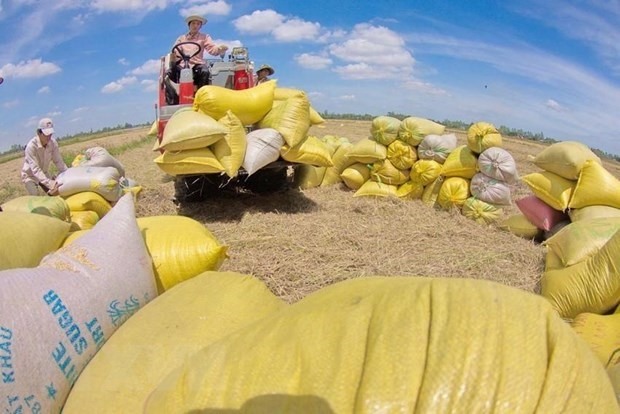
HÀ NỘI — ASEAN’s 700-million market has a lot in common with Việt Nam in terms of culture, habits and preferences, according to the Ministry of Industry and Trade (MoIT), and there is still room to grow for Vietnamese exports in ASEAN markets, including Vietnamese rice, a major export of the country.
To answer questions related to rice import and export among ASEAN markets, the ministry’s trade facilitation department held a working session with Vietnamese exporters on Thursday in southern An Giang Province, a major producer of rice in Việt Nam.
According to the ministry, the Philippines was Việt Nam’s largest rice buyer in 2021, with a purchase volume of 2.45 million tonnes and a turnover of US$1.25 billion.
On average, Vietnamese rice to the Philippines fetched $509 per tonne, a 10.7 per cent increase in volume and 7.1 per cent in price from the previous year.
Export to the Philippines alone accounted for 38 per cent of the country’s total rice export throughout the year.
During the first quarter of 2022, the Philippines remained Việt Nam’s largest rice buyer, accounting for 48 per cent of the country’s total rice export at more than 672,000 tonnes at an average of $462.8 per tonne, totalling $311 million.
Aside from the Philippines, Malaysia, Singapore, Indonesia, and Brunei were also top buyers of Vietnamese rice among ASEAN countries.
Phạm Thế Cường, Việt Nam’s trade attache in Indonesia, said Vietnamese rice had gained popularity in Indonesia in both traditional markets and supermarkets. There had been fierce competition between Vietnamese and Thai brands. In 2020, Indonesia imported roughly the same amount from the two countries.
There has been an uptick in rice export to Malaysia in January 2022. Việt Nam shipped nearly 35,000 tonnes of rice at $16.07 million to Malaysia in January, a 104 per cent increase in volume and a 67.5 per cent increase in turnover compared to the same period last year.
Vietnamese rice exported to ASEAN countries mainly was made up of lower-quality rice. As Việt Nam has steadily moved to produce higher-quality rice, which currently accounts for up to 80 per cent of the country’s entire production, it will be difficult to compete with affordable brands from India, Myanmar and Pakistan in the future, according to the ministry.
As a result, Vietnamese rice prices have been on the rise since 2020. As the country continues to focus on producing high-quality rice, prices have been predicted to continue with an upward trend, especially after setting an export goal of just under 4 million tonnes annually by 2030.
To realise said objectives, industry experts and policymakers have called for rice producers to conduct a comprehensive review of major markets, including ASEAN markets, the EU and the US, to find a balance between supply and demand for Vietnamese rice. – VnExpress News
- Reduce Hair Loss with PURA D’OR Gold Label Shampoo
- Castor Oil Has Made a “Huge” Difference With Hair and Brow Growth
- Excessive hair loss in men: Signs of illness that cannot be subjective
- Dịch Vụ SEO Website ở Los Angeles, CA: đưa trang web doanh nghiệp bạn lên top Google
- Nails Salon Sierra Madre
 VnExpress News The News Gateway of Vietnam
VnExpress News The News Gateway of Vietnam




